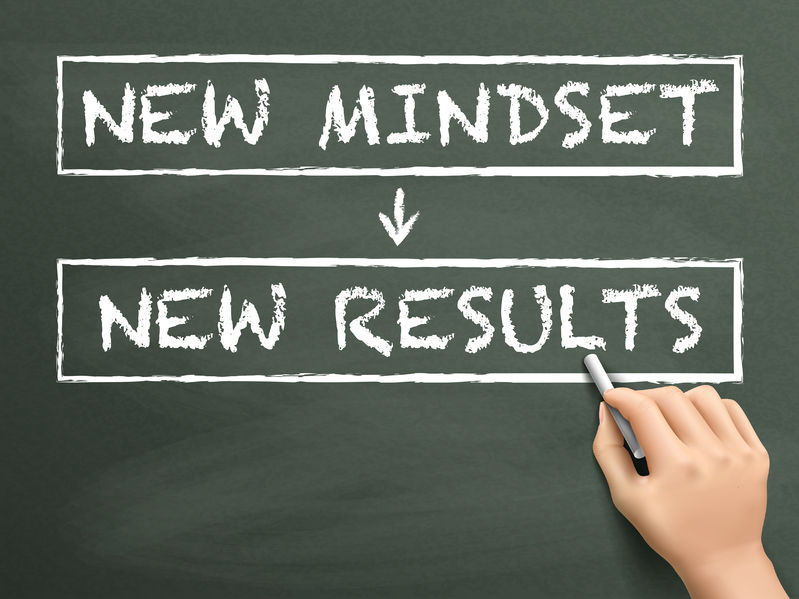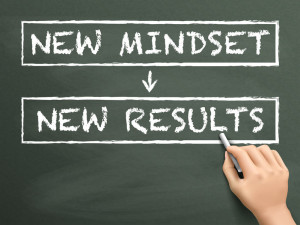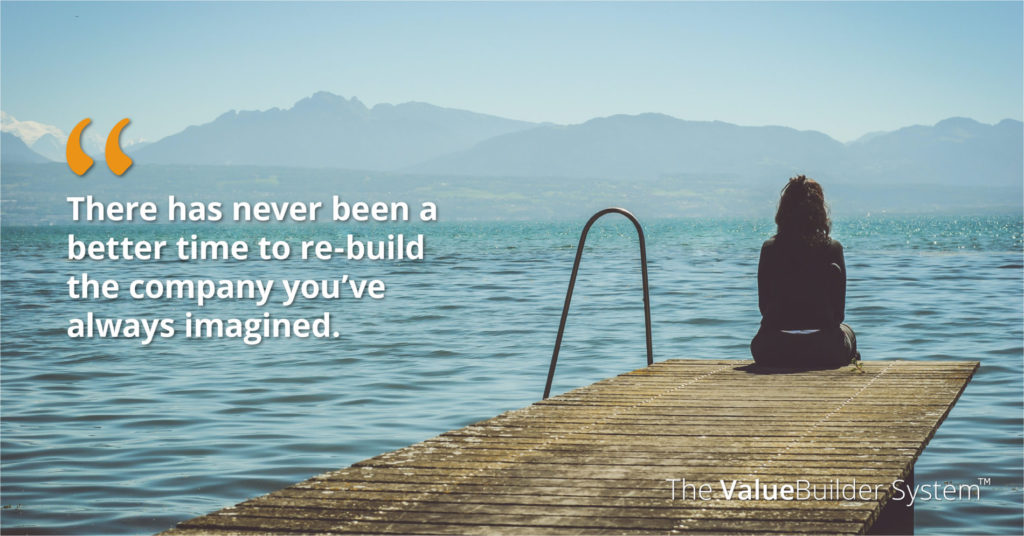6 Ways You Can Change Your Limiting Beliefs


When I first started working with leaders, I had the wrong assumption. I thought my time would be spent helping them develop strategy, design organizations, and build high performing teams.
I’ve now worked with leaders for 17 years. Most of my time is spent much differently. What I usually end up spending my time on (and what produces the greatest results) is working with how they see, interpret, and respond to life.
Some people call these limiting beliefs. They are “truths” that we’ve accepted about ourselves, life, and how things work.
Sometimes we’re wrong or not as right as we think we are. When this is the case, they limit our experiences and our potential.
As a general rule, my clients are very smart, well informed, and motivated. They have already achieved success. Intellectually, they are set to expand on past accomplishments.
This is especially confusing for successful leaders who have achieved a certain amount – yet now feel like they are bumping up against an invisible ceiling.
It feels like something is holding them back from what they think or believe should be possible.
Something is. This is limiting beliefs.
My story
As I mentioned earlier, I’ve been consulting for 17 years. For the first seven or eight years, I really struggled.
I provided great services and my clients benefitted. I received many referrals. I had great testimonials. I had “prestige clients.”
From a client perspective, I was doing great. However, from a business perspective, I was barely making a living. Even that might be a generous way of saying it.
This didn’t make sense to me and it was embarrassing. Here I was helping others lead, grow out their organizations, and accomplish more – but I wasn’t experiencing it myself. I felt like a fraud.
Then, about nine years ago, I decided I had enough. My wife was pregnant with our first child. Something needed to change. I knew I needed help.
I did my best to swallow my ego and hired a coach. His name was Tony. (Check out my interview with Tony on my podcast.) In our first conversation, I told Tony what I needed to work on.
He ignored me and said, “You have issues with money. You need to work on that.” I didn’t want to talk about money. Although a lack of money was why I hired him!
I definitely didn’t want to talk about mindsets, or how I think, or any of that other woo-woo stuff. I just wanted solid, practical advice on how to change my life without really changing my life.
Gratefully, Tony saw through my self-diagnostic nonsense. As I worked with him, I began a process of making real shifts which:
- Changed and expanded my life
- Laid the foundation for a different, bigger and better future for my family
- Dramatically improved the quality of how I served my clients
All of that came from changing how I thought. None of it came from a new business strategy.
In fact, I wasn’t able to pursue a new business strategy until I changed how I thought.
From Tony, I learned that money is just a symbol. It represents something to me. In my case, it represented something I was uncomfortable with.
Part of what I believed was that success (financially or otherwise) was alright for others but not for me. So, while I was comfortable and effective at helping others move ahead, I stayed stuck myself.
What’s your story?
I’ve worked with leaders of organizations of all sizes. From mom and pop businesses to Fortune 500 companies.
When they are stuck, it is rarely due to a lack of technical knowledge. (Although that is sometimes true.) Usually, they’ve reached the furthest horizon of what they can envision or believe in. Essentially, they’ve arrived at the limits of how they see themselves.
Maybe that has to do with money. Or influence. Or authority. Or being a (fill in a demographic descriptor) in the workplace. Or conflict. Or fairness. Or time. Or…
What’s your story? What’s your story about the reality you currently experience?
Is it what you want?
If not, are you ready to change it?
Why does it matter?
If I was merely writing “success literature” my answers would be different. I’d talk mostly about your ability to finally experience the kinds of relationships you really want, freedom, or financial success.
All of that can be true. But more importantly, as leaders, how we see life and possibility set the limits for the lives and possibilities of others.
In my family, there have been times where I’ve needed my wife to believe in me when I wasn’t sure that I believed in myself. She’s needed the same from me. We need each other’s vision.
As an employer, I’ve often seen a greater potential for my employees than they saw themselves. Many have told me that it sometimes felt challenging or stressful to them, but they also tell me about how much they grew as a result.
As a consultant, I’ve often believed more in my client’s vision then they do themselves. Sure, they want it. But they often doubt it. When everything is tough, when they are on the “earning it” side of vision, it can be easy to lose faith. That is where I’ve often had to have faith for them.
I’m able to have greater faith for others, and believe even more in the potential of others, because of my own experience in changing my mindsets and self-image.
It has benefitted me. More importantly, it helps me bring greater benefit to others.
That will be true for any leader willing to expand their story.
Changing how you see
Limiting beliefs are powerful because they usually were formed at an early age and have been part of our entire life. They don’t feel like options. They feel like “what is.”
They may have even contributed to some of the success we’ve experienced and they’ve protected us from error or pain. At a certain point, they no longer serve us well.
I’ll be honest. Changing how you see is not easy.
But to make it a little easier, here are specific steps that will help you change:
1. Recognize the limiting belief: It’s not always easy to see our limiting beliefs. It’s a little like looking at the back of your head. Here are a few things that help:
a. Explore the borders of unmet desires: What is a strong, unmet desire in your life? Most deep desires revolve around a desire for significance, security, or a sense of satisfaction in life. Maybe it is a relational desire, financial, or sense of purpose or mission.
If you feel like you are not gaining traction towards that desire, reflect on what the major doubts or fears are that surround it for you. Those doubts or fears are reflections of your limiting beliefs.
b. Ask others: I needed Tony to help me see one of my limiting beliefs. It helps to seek out help. For two reasons. 1) Others often see something we don’t. 2) Others can provide external validation that it is alright for this belief to change.
2. Describe the new, better belief: You can’t just discard an old belief. It needs to be replaced with a new one.
This is often an iterative process. The vision doesn’t always spring out fully formed. It often needs to grow, experience a little success, and grow again. Give yourself a specific direction to grow in.
3. Be honest: Are you willing to do what you’ve never done to experience what you’ve never experienced? Change is hard. It often involves facing fears. The path to a better future is rarely as difficult as our imagination makes it out to be – but may not always feel like rainbows and butterflies.
What will make this worth it for you? Are you truly willing to try?
4. What environments or events trigger my limiting beliefs? Identify your triggers, those things that seem to provoke your limiting beliefs to pop up and take over.
If you can remove or limit your exposure to negative triggers, do so. But mostly just be aware of them.
5. Stop reacting, start responding: When beliefs are triggered, behaviors naturally follow. Until now, those behaviors have been reactive. Now you need to make them intentional.
When triggered – what new behaviors will move you towards this new you? Define them specifically.
6. Get help. It is difficult (but not impossible) to change on your own. For more people, it is much faster and easier to do this with help. Here are some examples of help:
a. Relational marinade: Immerse yourself in relationships with people who think and act like you want to think and act. Befriend successful entrepreneurs. Spend time with people in healthy marriages. Join a high-level peer network.
b. Mental marinade: Immerse yourself in podcasts, books, workshops, or whatever else that best reflects what you are trying to become. Surrounding yourself with these patterns of thinking and attitudes starts to shape your own.
c. Get mentors, hire a coach: Bring people into your life for the expressed purpose of asking them to help you grow.
Since I hired Tony, I am nearly always working with at least one, sometimes two coaches who I pay to work with me.
I only have one life. I need accountability to act and I want to spend more time doing and less time figuring out how to do.
The Wrap
Those you lead and the community around you will all benefit from your pursuit of growth. I encourage you: Don’t leave your future or your potential to chance.
Take good care,
Christian
Please join me on my social media channels:
![]()
![]()
![]()
![]()
![]()
Find the value of your company with my free assessment tool: The Value Builder System
The Value Builder System™ is a 13-minute online questionnaire that evaluates your business on the eight factors that contribute more to its attractiveness and value. These factors are scored on a scale of 1-100. Businesses that score over 80 are likely to command 70%-100% higher value than others.

In my podcast, THE LEADERSHIP COACH, we explore effective, high impact and enjoyable leadership. We talk about personal development and the attributes that all effective leaders possess. I interview other leadership experts who share their knowledge and tips to help you build the confidence to lead and learn the habits of good decision-making.
Opportunities
Free Resource: How To Accomplish More Without Doing More is a workbook I created to walk leaders through a process of helping you own your calendar, liberate your time, and still get more done. Download it for free!
Executive and Leadership Coaching: Do you feel overwhelmed? Are you not getting the results you expect from the effort you are putting in? Do you find yourself facing similar challenges time and time again? Would you like to change specific ways of relating or reacting? If you would like to experience predictable, measurable growth Contact me.
Profitable Exit Strategy Workshop: Are you a business owner or partner? Are you over 55? Are you starting to think about exiting your business or active management in the next 3-5 years?
- Are you curious about what your business might be worth?
- Would you like to discover the specific steps you need to take to increase its value and become highly attractive to a buyer?
- Are you planning on handing it over to family or employees and you want to ensure long-term success?
If so, contact me now
Article Categories
Popular articles

Download my free 10-page eBook:
How To Accomplish More Without Doing More:
Eight Proven Strategies To Change Your Life
Discover how to save eight hours during your workweek-even if you're too busy to even think about it. The resource every maxed out executive needs.
